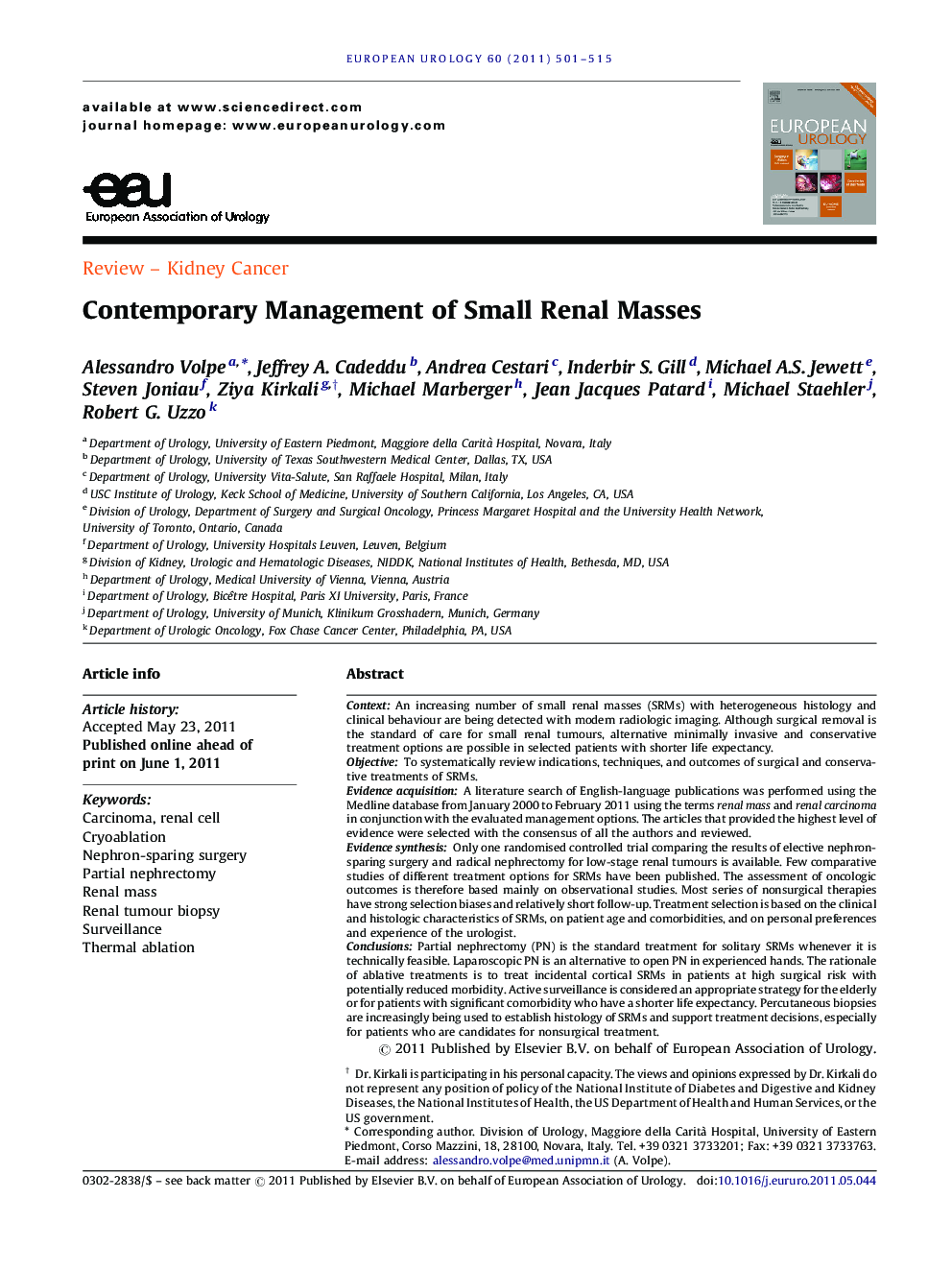| Article ID | Journal | Published Year | Pages | File Type |
|---|---|---|---|---|
| 3924321 | European Urology | 2011 | 15 Pages |
ContextAn increasing number of small renal masses (SRMs) with heterogeneous histology and clinical behaviour are being detected with modern radiologic imaging. Although surgical removal is the standard of care for small renal tumours, alternative minimally invasive and conservative treatment options are possible in selected patients with shorter life expectancy.ObjectiveTo systematically review indications, techniques, and outcomes of surgical and conservative treatments of SRMs.Evidence acquisitionA literature search of English-language publications was performed using the Medline database from January 2000 to February 2011 using the terms renal mass and renal carcinoma in conjunction with the evaluated management options. The articles that provided the highest level of evidence were selected with the consensus of all the authors and reviewed.Evidence synthesisOnly one randomised controlled trial comparing the results of elective nephron-sparing surgery and radical nephrectomy for low-stage renal tumours is available. Few comparative studies of different treatment options for SRMs have been published. The assessment of oncologic outcomes is therefore based mainly on observational studies. Most series of nonsurgical therapies have strong selection biases and relatively short follow-up. Treatment selection is based on the clinical and histologic characteristics of SRMs, on patient age and comorbidities, and on personal preferences and experience of the urologist.ConclusionsPartial nephrectomy (PN) is the standard treatment for solitary SRMs whenever it is technically feasible. Laparoscopic PN is an alternative to open PN in experienced hands. The rationale of ablative treatments is to treat incidental cortical SRMs in patients at high surgical risk with potentially reduced morbidity. Active surveillance is considered an appropriate strategy for the elderly or for patients with significant comorbidity who have a shorter life expectancy. Percutaneous biopsies are increasingly being used to establish histology of SRMs and support treatment decisions, especially for patients who are candidates for nonsurgical treatment.
